12-DAY CHOQUEQUIRAO TO MACHU PICCHU HIKE

Duration

Group Size
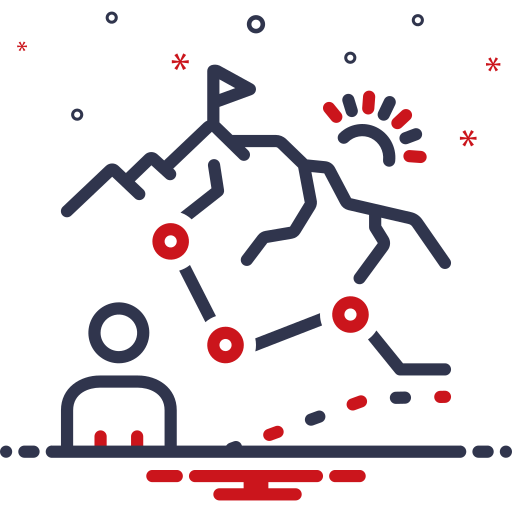
Altitude Max
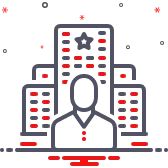
Accomodation
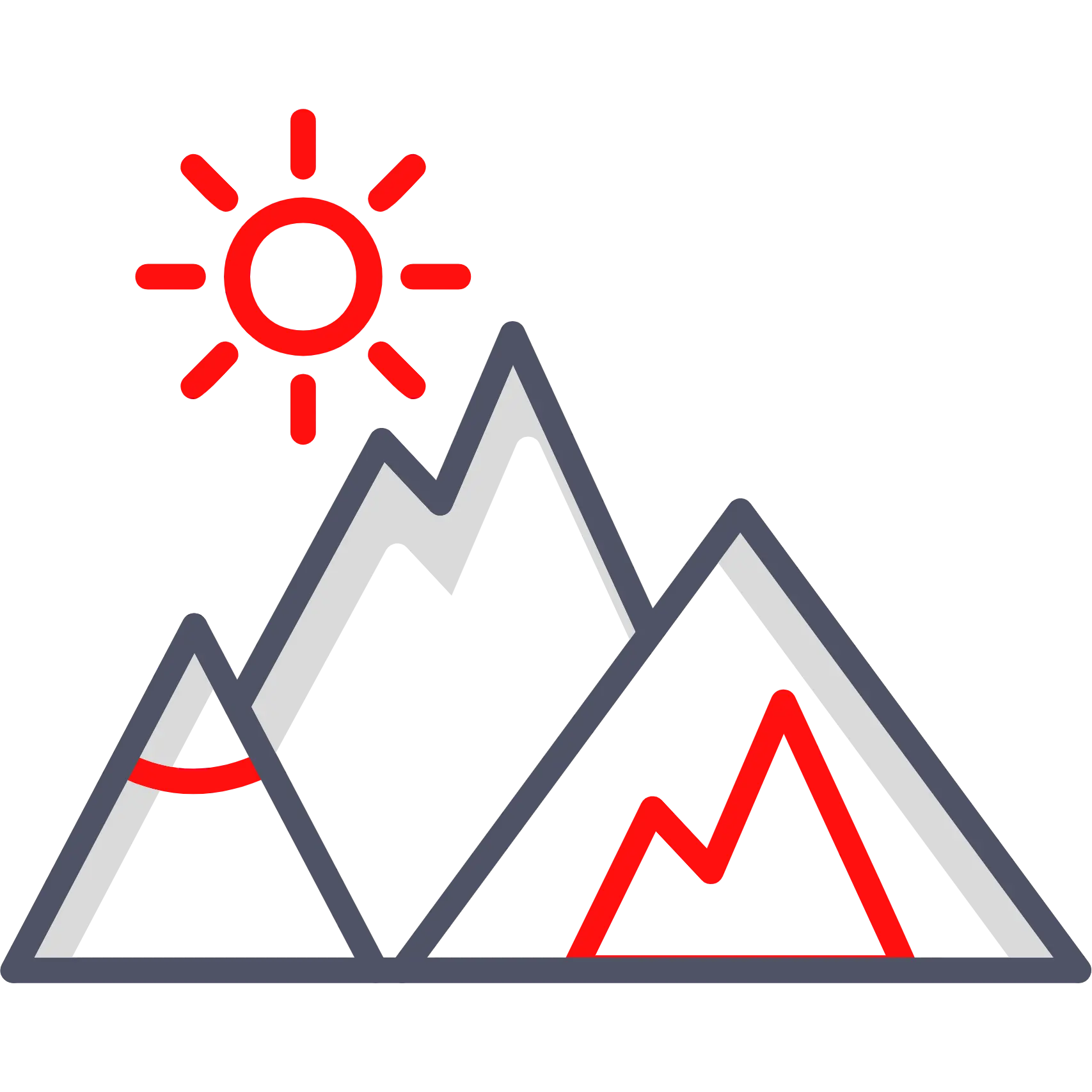
Difficulty
Are you ready for an unforgettable adventure? The 12-day trekking Choquequirao to Machu Picchu is a challenging and rewarding journey through the stunning Andes Mountains and high jungle of Peru. This experience takes you on a ancient path from Choquequirao, onto the sacred Salkantay mountain (6.271m/20569ft), one of the highest and most stunning throughout the Peruvian Andes, passing through Quechua communities to finally join the 4-day Inca Trail to Machu Picchu. Get ready to experience the exciting and wonderful choquequirao trekking.
Brief Itinerary:
- Day 1: Cusco- Cachora- Capuliyoc- Chiquisca- Puente Rosalinas
- Day 2: Puente Rosalinas – Choquequirao
- Day 3: Choquequirao Rio Blanco, Or Pichihunuyoc
- Day 4: Pinchihunuyoc – Rio Blanco – Maizal
- Day 5: Maizal – Yanama
- Day 6: Yanama – Qolpapamapa
- Day 7: Qolpapampa – Ichupata
- Day 8: Ichupata – Pampacahuana
- Day 9: Pampacahuana – Ayapata (Inca Trail). – Ayapata
- Day 10: Ayapata Chaquicocha
- Day 11: Chaquicocha – Wiñaywayna
- Day 12: Wiñayhayna – Machupicchu
Itinerary
Day 1: Cusco- Cachora- Capuliyoc- Chiquisca- Puente Rosalinas
Our 12-Day Choquequirao to Machu Picchu Hike starts from Cusco early in the morning to have a car ride of 4 hours to the charming village of Cachora, and half an hour more to Capuliyoc, situated on the edge of the Apurimac canyon from where we have our first beautiful views of the Apurimac valley stretching below as well as the snow-capped peaks of Padrayoc and Wayna Cachora, and surrounded by impressive snowcapped peaks. After lunch in Capuliyoc, it is a 3 hour hike to (Chiquica (1950 meter 6435 feet) or ( puente Rasalinas next to the river Apurimac 1550 metres/ 4950 feet) Our total hiking time today is about four or five hours. all the way down.
Day 2: Puente Rosalinas – Choquequirao
The day begins by a climb to Santa Rosa and then onto Maranpata afther this place the trail is more Andean flat (up and down), to Choquequirao Camping site, where we will have lunch. The climb from the river takes about 4 hours and is tough. from Maranpata we will start to see the arqueological site, where after the lunch, we have 30 minutes more hike to the ruins. (3110 metres/ 10120 feet) We will spend the late evening in the ruins, where we will watch the sunset and have the chance to see condors. Accommodation: Camping at Choquequirao campsite 3033m not in the arqueological place. is prohibited.
Day 3: Choquequirao Rio Blanco, Or Pichihunuyoc
We have a chance to more fully explore the ruins and have a little rest in the morning. In the afternoon we will climbing over a ridge hike to Choquequirao pass, and then down to the ruins Pinchinuyoc, where we will camp the night. This is definately the easiest day of the trip! Accommodation: Camping at Pinchinuyoc about 3000m/ or depending on the group at Rio Blanco, a further 1.5 to 2 hours descent.
Day 4: Pinchihunuyoc – Rio Blanco – Maizal
If we spend the night, Pinchihunuyoc, we have a chance to more fully explore the ruins and have a little rest in the morning. IF NOT, if is rio blanco the camping site, we have chance to swiming in the river in the afternoon, and day four, have to be definitely the easiest day, we will climbing from rio blanco to Maizal. over a ridge hike, to maizal, where we will camp the night, with the local family, This is definitely the easiest day of the trip! Accommodation: Camping at Maizal about 3000m/ a further 3 to 3.5 hours ascent.
Day 5: Maizal – Yanama
We depart at 7am, and walk uphill for about 3 hours through semi-jungle, to the Victoria Mines. We visit the ancient mines and some Inca Ruins before climbing an hour more to the pass of Abra Victoria. (4130 metres/ 13 546 feet). The newly discovered Qoryhuayrachina ruins are between Yanama and Maizal and we do follow well-constructed inca steps at an area that we call “Mina Victoria” (we started calling it this because that’s what the muleeteers called it)
the newly discovered ruins of Qoryhuarachina are nearby
There are spectacular views from the pass as we descend to the charming village of Yanama. (about 2 hours walk). Accommodation: Camping at Yanama 3800m
Day 6: Yanama – Qolpapamapa
A day of mountain peaks. In this day we walk for seven hours, preferably rising early to appreciate the chain of snowpeaks (Pumasillo, Salkantay) that we can see from there. We lightly ascend to the second pass which is the second highest point of our trek at 4800 metres/ 15908 feet. After the pass we descend for three hours to the Valley of Qolpapampa, where will spend the night. Accommodation: Camping at 2900m.
It is one of the most difficult days.
Day 7: Qolpapampa – Ichupata
A day of botany and glaciers. Today´s hike is mostly up, as we will climb from Qolpampa, upwards, to the Salkantay pass (4600m). You will clearly note the changing scenery as you pass through different varieties of plants typical of the high jungle – known in Spanish as the “eyebrow of the jungle”. You finally arrive at the pass after 5 hours of hiking. This is the second highest point of the trip. (4,600 metres/13451) All day you will have been going “against the flow” as this is a popular trekking route, but in reverse. So expect to meet a lot of people along the trail during this day. From the pass you will descend about 2hours to Salkantaypampa (4100m) where the group may camp, depending on how well you have progressed during the day. You might continue onwards to Ichupata.
Day 8: Ichupata – Pampacahuana
Alter a cold night, we continue our choquequirao hike to start the 3-4-hour steep climb towards the Incachiriasca pass (4850m/15908ft), the equal highest of the entire route, offering impressive views of the Salkantay snow peak. After a celebratory rest on the pass we will then descend towards our lunch spot at Sisaypampa, a flat area from which one can observe the Salkantay´s neighboring valleys (it is possible that you will see condors in this area). After lunch we continue towards the Pampacahuana community, located next to an original Inca canal, where we set our second camp and spend the night.
Day 9: Pampacahuana – Ayapata (Inca Trail). – Ayapata
In the morning you will see that the valley begins to narrow and the river becomes a canal. The Incas frequently cut canals through valleys to increase the agricultural land. From Pampachuana it’s a 3 hours hike down the narrow, steep valley to the Inca fortress of Inkaracay (also known as Paucarcancha). This is a site well worth exploring and little known to the vast majority of visitors to Peru.
It’s about another ½ to 1 hours walk down to the small village of Wayllabamba which is the point that we join the Traditional (or Classic) Inca Trail to Machu Picchu. As mules are not allowed on the Traditional Inca Trail, at this point we say goodbye to our mules and muleteers and welcome our porters who will accompany us for the next few days
In the afternoon, we leave Wayllabamba behind to start our way up the Warmihuañusca mountain pass (Dead Woman’s pass) through an abrupt and steep ascent that stretches for 9 km. We only climb part way up the pass, stopping at Ayapata, where we camp and spend the night. (also known as Yuncachimpa)
Day 10: Ayapata Chaquicocha
Today we continue our trek up to the highest point in the Inca Trail (but not on this trek), reaching the mountain pass of Abra Warmihuañusca (4200m/13776ft) after about 2 hours. Immediately after the pass, we descend into the Pacaymayo valley (3600m/11808ft), from which we then continue to climb to the second pass, the Abra Runkurakay (3970m/13022ft), stopping halfway to visit the very impressive archaeological complex Runkurakay. This site, located at 3800m/12464ft, consists of a small oval structure that is believed to have served the purpose of a watchtower. After going over the pass, we descend towards Yanacocha (Black Lagoon) and enter the cloud forest to finally arrive at Sayacmarca (3624m/11887ft). This is a beautiful complex made up of a semicircular construction. Only 20 minutes away is Chaquicocha – 3400m (dry lake in Quechua), where we will camp.
Day 11: Chaquicocha – Wiñaywayna
After breakfast we have an easy climb, to arrive at the third pass, the Abra de Phuyupatamarca (3700m/12136ft). Phuyupatamarca is one of the most complete and best-preserved archaeological complexes along the Inca Trail to Machupicchu, and is located on the highest point of a mountain. Curiously, Phyupatamarca means ¨town over the clouds¨. From here we also have impressive views of the Urubamba River valley. We descend by stone to Wiñaywayna (2650m/8692ft). At this campsite we will find a lodge with a restaurant, bar and bathrooms with hot showers. The campsite has the same name as the complex located only five minutes away from the lodge. Wiñaywayna is an impressive complex made up of an agricultural center with numerous terraces, a religious sector and an urban sector – even if you are tired and enjoying the relative luxury of this campsite, don’t miss this archaelogical complex!
Day 12: Wiñayhayna – Machupicchu
On this last day we get up at 3:30 am to leave from Wiñaywayna at approx. 5:30 am is open the last control: and climb to the Intipunku, or the Sun Gate. This will take an hour of hiking along a trail of flat stones on the edges of cliffs in highland jungle. From this fabulous spot, we may see the sunrise over Machu Picchu. From Intipunku we descend into Machupicchu, and 40 minutes later we enter this famous city. We then descend to the control point where we register ourselves and leave our backpacks. We immediately begin a complete guided tour Machu Picchu that will take approximately two hours.
After your tour you can further explore the ruins by yourself or climb Huayna (Wayna)Picchu for that classic photo of Machu Picchu. You need to buy the Huayna Picchu entry separately. Also try to fit in a visit to the Temple of the Moon or Uyna Huayna Picchu while visiting Huayna Picchu.
Then travel back to Cusco and end of our trekking choquequirao machu picchu
Included
- An explanation two days before departing
- Transport in private bus to the start of the trek Caapuliyoc, Cachora.
- Transfer to your hotel on return.
- Transfer from Ollantaytambo to Cusco.
- Meals according to the program (Vegetarian available)
- Boiled water on all days for your bottles
- Snacks before trekking
- igloo tents – 2 persons in each 4-person capacity tent with plenty of space for your backpacks
- Toilet tents
- Duffel bags.
- Pack animals (mules and horses) to carry the baggage and equipment in the hike before of Inca trail.
- Emergency horses before of the inca trail.
- Wranglers to care for the pack animals
- Porter to carry the camping equipment, dining tents, kitchen, tables, chairs in the inca trail.
- Cook and assistant cook
- Kitchen/eating utensils
- Porter to carry your extra duffel bags maximum 6 kilos (14 libras) in inca trail.
- Professional guide who speaks English, Spanish and Quechua
- Assistant guide for groups larger than 8 peoples
- Entrance into Machu Picchu
- Entrance into Inca Trail.
- Entrance to Choquequirao.
- Bus down from Machupicchu.to Aguas Caientes
- Return train ticket to Cusco (Train Expedition).
- First aid equipment.
- Oxygen tank
- Teatime every day (tea, coffee, biscuits, popcorn)
- Breakfast the first day
- Lunch the last day in restaurant in Aguas Calientes on day 12 of the trek.
- Tips for personnel: guide, cook, porter, wranglers (according to their job)
- Sleeping bags (they can be rented in the office)
- Entrance to Wayna Picchu mountain extra cost 55 USD
Recommendations
OPTIONAL SERVICES:
- You can request the Vistadome or Panoramic Executive train service Increasing USD 45 USD per person.
- You can request the Hiram Bingham luxury train service Increasing USD 820 Dollars per person.
IMPORTANT:
- Our groups from 3 passengers, can request their special discounts for all our 12-day choquequirao hike
- Our Peruvian tourists who have the valid ID, have a special discount of $ 30 per person.
FAQs
What is the Inca city of Choquequirao?
Choquequirao was an ancient Inca urban center. The American explorer Hiram Bingham met the site in 1909 (before arriving at Machu Picchu). However, excavations are slow and continue to date.
Inevitably Choquequirao was called the ‘Sibling of Machu Picchu”. But, while the Wonder of the World receives around 5,000 visitors a day, ‘Shock’ is almost completely deserted. Therefore this choquequirao hike is an outstanding journey
What was the importance of Choquequirao?
Like Machu Picchu, his famous sibling, Choquequirao seems to have been a kind of royal city for the Inca nobility. It was built one or two generations before the arrival of the Spaniards.
It has several buildings such as ‘Kallanka’: two ceremonial rooms with stairs and irrigation canals inside. It is one of the most important constructions that you can see through our trekking choquequirao machu picchu.
How high is Choquequirao?
Our trekking choquequirao machu picchu will reach 3,050 meters above sea level (m.s.n.m.).
When is the best time for choquequirao hike?
The dry season (between April and October) is the best time to go to Choquequirao. Sweat, campsites and an incredible 4-day hike (2 way and 2 back) separate this ancient Inca city from any nearby road or hot shower. During those days, the route is easier due to the low frequency of rains.
How is the weather during the 12-Day Choquequirao to Machu Picchu Hike?
The average temperature is 14ºC. During the dry season (from April to October) the heat reaches 25ºC. At night, the cold reaches 4ºC. In the rainy season (from November to March) river rains occur more frequently.
What to Bring
- Knife
- Dehydrated fruits, candies and chocolates
- Gloves, scarf, wool socks.
- Raincoats in the rainy season.
- Flashlights, batteries and replacement bulbs.
- Long pants.
- Insect repellent.
- Sunscreen.
- Sweaters and a jacket
- Backpack (approx. 50 to 70 liters) for walks.
- Towel and toilet paper.
- Underwear.
- Tshirts.
- Warm clothes in case of cold (sweater and jacket).
- Swimwear.
- Some local money for the hot shower at the last camp.
- Wear slippers or shoes without heels for walks
- Personal toiletries.
- Personal medicine kit (Cotton, bandages, alcohol, aspirin, pills for stomach problems, medicines to prevent altitude sickness).
- Photographic camera.
- Boots or walking shoes, without heel.
- Sleeping bag.
- Walking stick with rounded jebe tip.
- Hat or cap
- Long sleeve shirts
- Water bottle and pills to purify water.
Galery
Reviews

Group Size


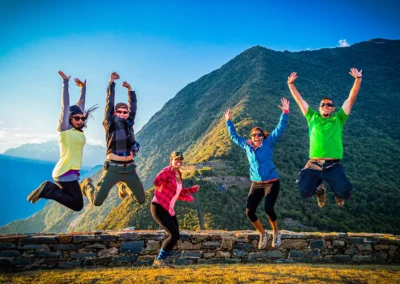
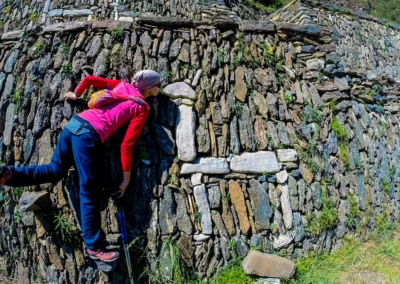

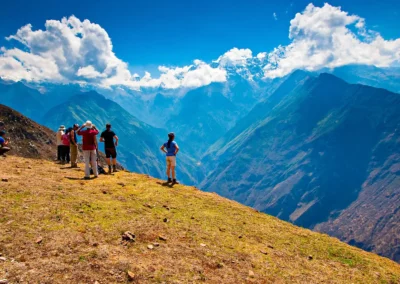


Reviews